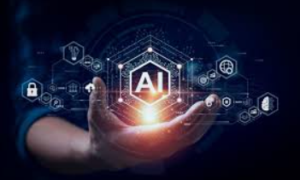From our everyday devices to the vast inter-connectedness of industries, it’s undeniable that the Internet of Things (IoT) is weaving its way into the very fabric of our lives. With each passing day, this transformative technology continues to shape and revolutionize not only how we live and work but also how businesses operate on a global scale. Join us as we delve deep into the world of IoT and explore its incredible potential to reshape our future in ways never imagined before. Get ready for a thrilling ride through innovation, connectivity, and endless possibilities.
Introduction to the Internet of Things (IoT)
The Internet of Things, or IoT, is a term used to describe the growing network of physical objects that are connected to the internet. This includes everything from everyday devices like fridges and thermostats, to more complex systems like manufacturing equipment and vehicles.
IoT has the potential to transform the way we live, work and interact with the world around us. By connecting devices and systems, it can help us to automate tasks, save time and make better use of resources. In the future, IoT could even enable our homes and cities to run more smoothly and efficiently.
There are already many examples of IoT in action. Smart meters are being used by energy companies to collect real-time data on electricity usage, while hospitals are using IoT-enabled medical devices to monitor patients’ vital signs. In the transport sector, meanwhile, GPS tracking and sensors are being used to manage traffic flow and improve safety.
With its vast potential, it’s no surprise that IoT is predicted to have a major impact on the economy in the years ahead. According to one estimate, IoT could add $15 trillion to global GDP by 2030 – making it one of the most transformative technologies of our time.
Benefits of IoT Technology
The benefits of IoT technology are numerous and far-reaching. By connecting physical objects to the internet, IoT provides a wealth of new data and insights that can be used to improve efficiency, optimize resources, and create new experiences and services.
Some of the key benefits of IoT include:
1. Increased Efficiency: By constantly collecting data on how people use energy, water, and other resources, IoT can help identify inefficiencies and waste. This data can then be used to make adjustments that result in significant resource savings.
2. Improved Customer Service: With IoT devices tracking everything from a person’s location to their online preferences, businesses can gain a much deeper understanding of their customers. This allows for more personalized service and better customer retention rates.
3. New Business Models: The data collected by IoT devices opens up entirely new business opportunities. For example, companies can now offer pay-as-you-go insurance plans based on actual driving habits, or sell predictive maintenance services that use machine learning to detect issues before they cause problems.
4. Greater Safety: By monitoring things like weather conditions and traffic patterns, IoT can help keep people safe by providing real-time alerts and guidance. Additionally, the connectedness provided by IoT can facilitate rapid emergency response in the event of an accident or natural disaster.
5. More Connected Communities: As more devices are connected to the internet, it becomes easier for people to connect with each other and to access services in their communities. This can help build stronger relationships between businesses and consumers, while also improving the quality of life for residents.
How is IoT Revolutionizing Industries?
The IoT is transforming industries around the globe by enabling new levels of data collection, analysis, and collaboration. In manufacturing, for example, IoT-connected machines can communicate with each other to dynamically optimize production line efficiency. In the energy sector, IoT applications are providing utilities with real-time visibility into the power grid, helping to identify and quickly address outages. And in healthcare, IoT devices are being used to monitor patients’ vital signs and provide early warning of potentially life-threatening conditions.
The benefits of IoT are not limited to large organizations – small businesses and consumers are also benefiting from the increased connectivity and data availability that the technology enables. For example, many insurance companies now offer discounts to customers who use connected devices to track their driving habits. And home automation systems that allow homeowners to control their lights, security cameras, and thermostats from a single mobile app are becoming increasingly popular.
As the IoT continues to evolve, it will become an increasingly integral part of our lives and the way we do business.
Security and Privacy Challenges Posed by IoT
The internet of things (IoT) is an emerging technology that promises to revolutionize the way we live, work, and play. However, as with any new technology, there are security and privacy concerns that must be addressed. In this blog post, we will explore some of the security and privacy challenges posed by IoT.
One of the biggest security concerns with IoT is the fact that many devices are not properly secured. Hackers can exploit vulnerabilities in these devices to gain access to sensitive data or take control of the device itself. This could result in serious consequences, such as a data breach or denial of service attack.
Another concern is that IoT devices collect a large amount of data about our daily activities. This data could be used to infer sensitive information about us, such as our health status or financial habits. If this data falls into the wrong hands, it could be used for malicious purposes.
There is a risk that IoT devices could be used to spy on us. For example, a hacked webcam could be used to record video footage of us without our knowledge or consent. This type of surveillance could violate our privacy and lead to serious implications for our safety and security.
To address these concerns, it is important for businesses and individuals to take steps to secure their IoT devices and protect their privacy. For businesses, this may include implementing strong security measures such as encryption and authentication. Individuals can also take steps to safeguard their privacy by being aware of the data their devices are collecting and using encryption for communications.
In conclusion, the security and privacy challenges posed by IoT are serious. However, with the correct precautions taken, we can mitigate these risks and enjoy the benefits of this technology.
What Does the Future of IoT Look Like?
IoT will continue to empower individuals and organizations to optimize their internal processes and workflows. In addition, we will see more opportunities for IoT to create positive social and environmental impact at scale. For instance, predictive maintenance using IoT can help us avoid costly downtime, while also reducing our reliance on natural resources.
Conclusion
The transformative power of the IoT is no longer a future promise; it’s here in full force, and businesses across all industries are leveraging its potential to innovate and create better customer experiences. As more manufacturers build advanced connected devices in which digital capabilities are embedded into everyday objects, the opportunities further expand to increase efficiency from both an operational and strategic perspective. In this way, IoT technology offers immense potential for organizations looking to outpace their competition—not just through process optimization but with compelling product offerings that customers can rely on.



































